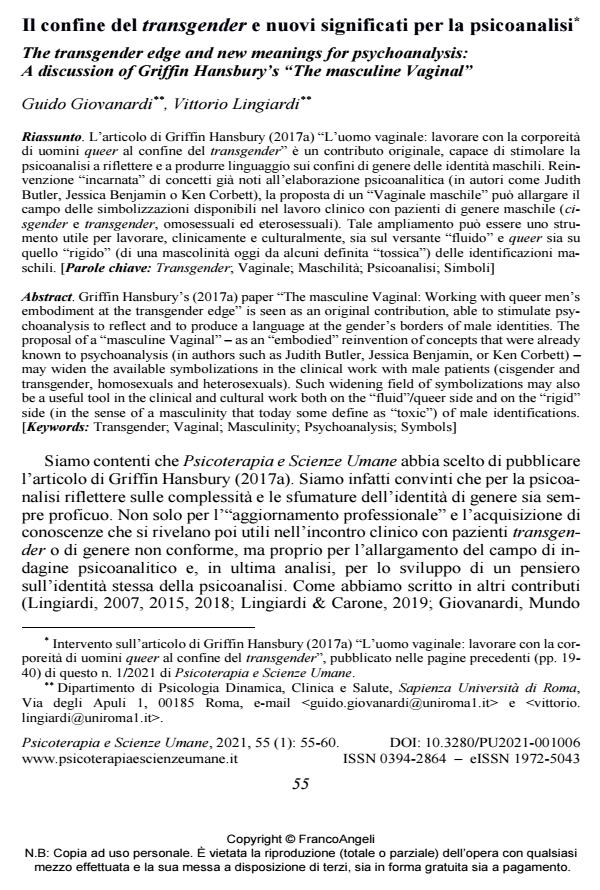Il confine del transgender e nuovi significati per la psicoanalisi
Titolo Rivista PSICOTERAPIA E SCIENZE UMANE
Autori/Curatori Guido Giovanardi, Vittorio Lingiardi
Anno di pubblicazione 2021 Fascicolo 2021/1
Lingua Italiano Numero pagine 6 P. 55-60 Dimensione file 255 KB
DOI 10.3280/PU2021-001006
Il DOI è il codice a barre della proprietà intellettuale: per saperne di più
clicca qui
Qui sotto puoi vedere in anteprima la prima pagina di questo articolo.
Se questo articolo ti interessa, lo puoi acquistare (e scaricare in formato pdf) seguendo le facili indicazioni per acquistare il download credit. Acquista Download Credits per scaricare questo Articolo in formato PDF

FrancoAngeli è membro della Publishers International Linking Association, Inc (PILA)associazione indipendente e non profit per facilitare (attraverso i servizi tecnologici implementati da CrossRef.org) l’accesso degli studiosi ai contenuti digitali nelle pubblicazioni professionali e scientifiche
L’articolo di Griffin Hansbury (2017a) "L’uomo vaginale: lavorare con la corporeità di uomini queer al confine del transgender" è un contributo originale, capace di stimolare la psicoanalisi a riflettere e a produrre linguaggio sui confini di genere delle identità maschili. Reinvenzione "incarnata" di concetti già noti all’elaborazione psicoanalitica (in autori come Judith Butler, Jessica Benjamin o Ken Corbett), la proposta di un "Vaginale maschile" può allargare il campo delle simbolizzazioni disponibili nel lavoro clinico con pazienti di genere maschile (cisgender e transgender, omosessuali ed eterosessuali). Tale ampliamento può essere uno strumento utile per lavorare, clinicamente e culturalmente, sia sul versante "fluido" e queer sia su quello "rigido" (di una mascolinità oggi da alcuni definita "tossica") delle identificazioni maschili.
Parole chiave:Transgender; Vaginale; Maschilità; Psicoanalisi; Simboli
Guido Giovanardi, Vittorio Lingiardi, Il confine del transgender e nuovi significati per la psicoanalisi in "PSICOTERAPIA E SCIENZE UMANE" 1/2021, pp 55-60, DOI: 10.3280/PU2021-001006